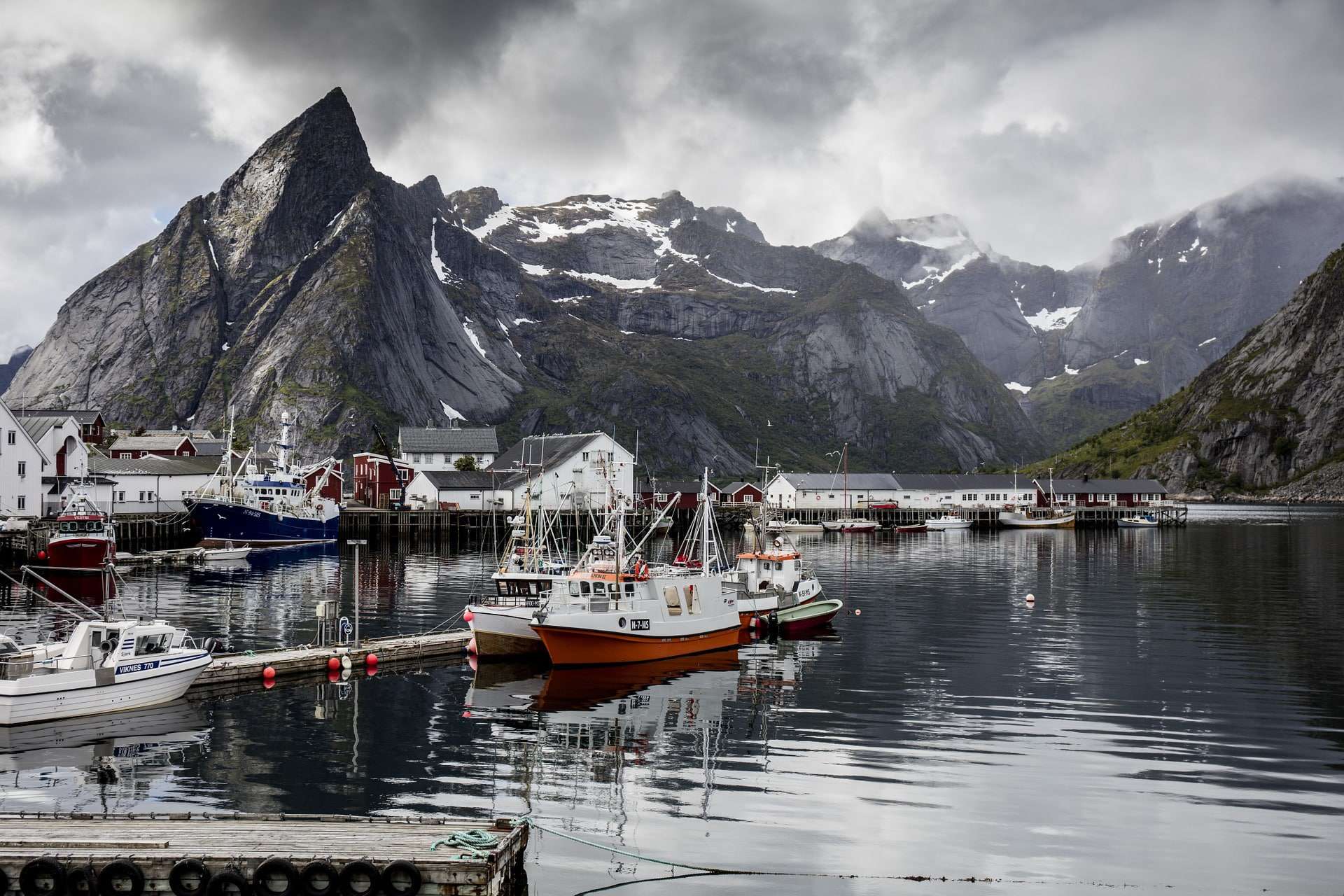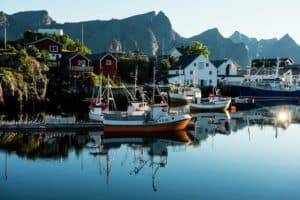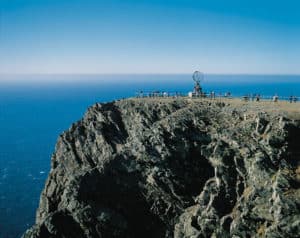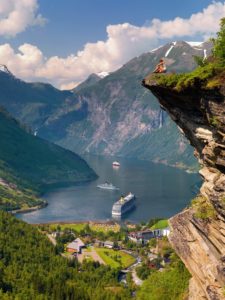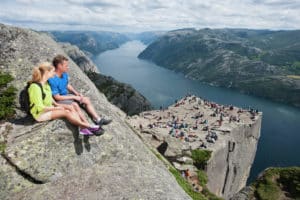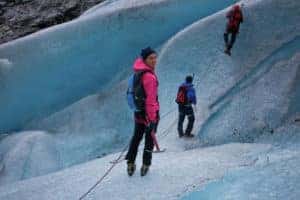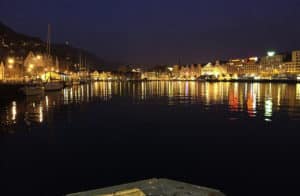Get to know Norway and the most popular attractions. We also have a comprehensive guide if you want to learn more about how it is to live as an expat in Norway.
The Myth
Norwegian cultural history has many catchy stories you have hardly heard before. Here you will find myths about Norway and the origins of the Nordic nations. We shall specifically mention one of them. The saga tells that it happened in the history of ur history: In the far north, where snow and ice and cold rule, the countries were ruled by a giant.
In a remote country, there was a giant who ruled. The giant had two sons, Nor and Gor, and a daughter Goe. Goe was the most beautiful of them all, but nobody was worthy to marry her. One day, the brothers went to work in the fields and were away from home to the sunset. When the evening came, the brothers were hungry, so they went home. They soon discovered that Goe was not at home. They looked everywhere without luck.
Driven by love for their sister, the two brothers went out to look for her. The sun went up and the sun went down, many times. Finally, they discovered a beautiful country, and tired of searching, they had almost given up to find their sister. Now they were determined to settle. So they shared the newly discovered country among themselves.
The saga states that Nor got the inland and called it Norway because he mastered the earth. His brother, Gor, got the islands because he mastered the sea. Over time they found their sister. Goe lived with Rolf from Berg, son of the great jotungen in Dovrefjell – the forefather to all good kings of Norway.
According to the myth, Norway, from this originates from gods and humans.
Norway- From Past to Present
Within excess of 5 million inhabitants, Norway is the smallest of the Scandinavian countries measured by total population. From the beautiful southern cities to the arctic north, there is more than one mountain to climb, fjord to sail through, and mythical beings lurking in the dark. The variety is exceptional, giving opportunity for life-long memories.
Norway as the present nation have only existed for a meager 200 years. Compared to the rest of the world-that is not a long time ago. In 1814, Norway were in union with Denmark, and as an ally with Napoleon, were on the losing side. After 450 years of union with Denmark, Norway passed over to Sweden as a part of the Kiel-treaty and after a brief war gained its sovereignty. Thus, the national day of Norway is celebrated 17. May to commemorate the creation of its constitution.
Throughout history, Norway have been a sea-faring nation. The past 40 years oil, and offshore-technology, surpassed agricultural goods and fish, as the biggest export-article. Even though fishing still plays a big part of the Norwegian economy. Especially known for the flourishing fish-markets are the north-west coast, ranging from Bergen to Aalesund.
Lofoten
Lofoten is the archipelago in northern Norway on a map it stands out as a hooked tongue in the Atlantic. Lofoten consists from east to west of the islands Austvågøya, Gimsøya, Vestvågøya, Flakstadøya and Moskenesøya, and the more isolated islands of Værøy and Røst further out. Add to this lots of small islands. The Lofoten Islands are characterized by islands that look like mountains standing up straight out of the sea, something that becomes more pronounced the farther out in the archipelago you come. Lofoten is quite large (1,226 km2. But you should still single out the beautiful Reine, a fishing village in the outer Lofoten. Another candidate is Henningsvær, another fishing camp in inland Lofoten, overlooking the middle of the Lofoten mountainous coastline. Lofoten has a rich bird life, including puffins nesting. If you go out on a little boat-trip you can see seals and killer whales.
Fishing in Northern Norway
Northern Norway offer blue oceans that is home to some of the most dense populations of fish. This is where the Gulf Stream meets the cold, nutrient-rich waters in the Arctic Ocean.Here the Norwegian Arctic cod swim to Lofoten to spawn, every winter, and world’s largest cod fishery happen here in thes winter months. To continue the feast, the coalfish come close to the coast in the summer, and attracts anglers who want to experience one of the best and tasty catches. Coastal cod, halibut, monkfish, haddock, redfish and several other fish species is found throughout the year. Some of Europe’s best salmon rivers is in Northern Norway, and in countless lakes and rivers there are trout and char. In some of the rivers are also eastern species such as pike, whitefish, grayling and perch. Free fishing in the sea for anglers and there are a large number of facilities that offer accommodation and boat rental and equipment for sea anglers. The freshwater angler may well get a lake or a river for themselves, there is plenty of space and lots of fish in the North Norwegian nature.
North Cape
North Cape is contrary to what you initially may think the most visited place in Norway. Not solely because of the beautiful and enigmatic midnight sun, also because of the astonishing nature and the beautiful lights occurring during the midnight sun, a natural phenomenon. If the weather gods are pleased, the sun can be visible for an astonishing 24 hours during summer solstice! The phenomena occurs during the summer months, around Medio may to ultimo July, and is only visible over the Arctic Circle. The effect of the midnight sun may cause difficulty sleeping and an elevated feeling. Maybe that’s why it is also a popular place to propose for marriage.
Fjords of Norway
Fjord-cruise is among the popular tourists choice when visiting Norway. The trips usually lasts for 7-10 days to get the best out of the experience. World renowned for the relaxing atmosphere, variety and unique experience.
It is more than 1200 fjords in Norway. The stretched Norwegian coastline have the longest fjords in the world, only surpassed by Greenland. Their scenic atmosphere characterizes them with steep mountainsides cutting through the landscape, waterfalls and small habitats alongside them. The fjords came to birth by glaciers cutting through mountains and rock up until 9000 years ago. With some of them placed on the UNESCO list, it is no surprise fjord sightseeing is so popular.
Geirangerfjorden
Norway is known for its fjords and the coolest and most beautiful is, by most accounts, the Geiranger Fjord. The fjord is 15 km long and is a branch of Sunnyvlsfjorden, which in turn is a branch of Storfjorden. The Geirangerfjord is surrounded by several mountain peaks over 1600 m high, which slopes steeply down into the water. This allows one to closely see the entire mountainsides from valley to peak, which is an impressive sight. On the hillsides of the fjord are four old farmhouses, of which the popular Skageflå, opposite a waterfall -the Seven Sisters, can be reached through a breathtaking trekking above the cliffs on the lower screen. A common sight in the fjord are two or three large cruise ships anchored outside of Geiranger, filled with tourists keen on exploring. It is no problem to be alone, because most tourists only visit the town of Geiranger and vantage points along the roads.
Norway-Land of The 1000 Mountains
Did you know, only 10 per cent of the Norwegian lands are fit for agricultural exploitation? The Norwegian trekking association list 10 of the most popular routes. On the top is Preikestolen, situated about 2 hour drive from Stavanger.
Preikestolen (The Pulpit rock) is a spectacular rocky ledge about 600 m directly above the Lysefjorden. Preikestolen is approximately 25×25 m large and three of its sides dips almost straight down. The Ledge probably formed during the ice age (approximately 100,000 to 10,000 years ago) when a glacier covered the Lysefjord. Water got into the crevices in the rock face froze and blew away large chunks of stone which was taken away by the glacier’s movement. Remained the angular creation. Across the Pulpit Rock is a clear rupture, but geologists are pretty sure that the Pulpit Rock will not crumble within the next thousands of years. It is quite easy to reach the Pulpit Rock. Go by car or bus to the mountain cabin Preikestolshytta, and then you walk about 3 km.
Other notable routes is Besseggen, Gaustatoppen and Kjerag. (Read more here)
Walking on glaciers is an exciting activity that has long traditions in Norway. Although it may be tempting to try out on your own, this can be very risky. Several places in the country’s mountains and glaciers where mountains habitual glacier guides guide hikers over ice
Extreme sport -Try the extreme!
Do you want to give yourself a challenge? Whether you are interested in rafting, river kayaking, go trekking in canyons or rock climbing, you should find what you are looking for -motorsport, diving, parasailing, kite surfing and much more. Extreme sports are in the wind
All kinds of extreme are becoming increasingly popular. Even park benches and stairs in the city-centers is used for spectacular stunts of people doing parkour and families go downhill biking in bike parks popping up in Norwegian resorts. Extreme appear on film, television and advertising productions and many are tempted. The event Extreme Week in Voss gets great press coverage and has contributed greatly to the interest in extreme sports. Whatever you find, you should be able to get the kick you seek, often with an extreme natural experience.
The Extreme Week in Voss is run by The Extreme Voss Foundation. This includes Voss Rafting Club, Voss Kayak Club, Voss Hang and Paragliding Club and Skydive Voss. Symbol of the event are the four elements: water, air, earth and fire. Here you will find base-jumping, potholing, skydiving, hang gliding, Kiting, Climbing, Long Boarding, Mountain biking and BMX, paragliding, and rafting. (Read more)
Kayaking
Norway is a big country with wild beauty. The coastline spring makes Norway a paradise for kayak and canoe paddlers. Norway also have thousands of beautiful water inland that are suitable for paddling. (Read more here)
Coastal Culture
Coastal Culture are memories people have created in the coastal zone and coastal areas. The cultural heritage is linked to the sea as a food source and a way of communication with fishing villages, trading centers, guest houses, coastal towns and market towns, large and small vessels, lighthouses, beacons and coastal industries. The short distance to the sea and the coastline has left its mark on the country.
The Cultural history is an important draw for tourists. Many traditional fishing villages along the coast can show small apartments and picturesque houses. There are a number of coastal and fisheries museums and collections of various kinds. The coast also has plenty of festivals and various activities in arts and local culture. Local seafood is part of this.
Tourists who come to Norway are interested in Norwegian food. Potato Ball, goat cheese, Norwegian strawberries, cloudberries, Fish and pikelets are just some of the wide variety Norway have to offer.
Sami People
The Sami is Norway’s indigenous people and an ethnic minority group living in Norway, Sweden, Finland and the Kola Peninsula in Russia. Most Sami live in Norway-ca 50000. The Sápmi Lapland stretches in Norway from Finnmark in the north to Femunden in the south. Previously the Sami were regarded as a semi-nomadic hunter- and fisher people, including reindeer herding that was the dominant industry. Reindeer herding is now modernized with the help of snowmobiles, but still reindeers is captured in the traditional way using the lasso.
More to Explore
Norway is home to some of the world’s most spectacular sites. The country attracts visitors from all over the world, but also Norwegians themselves are good at traveling within their own country. Norway has a violent nature, but given the proximity of these sites, still relatively few have visited them. Here you find places many people only dream to visit.
